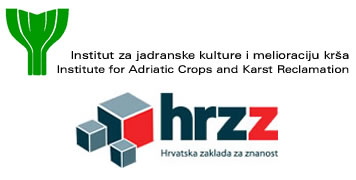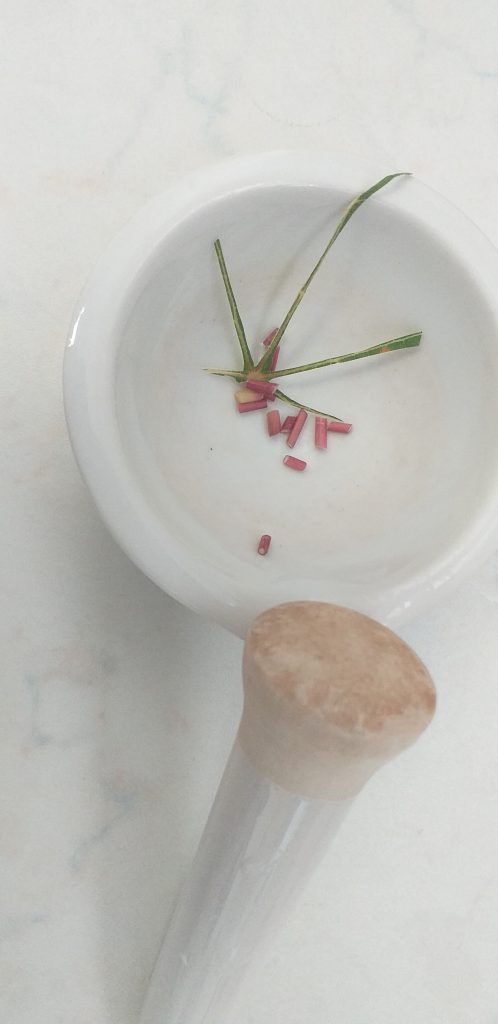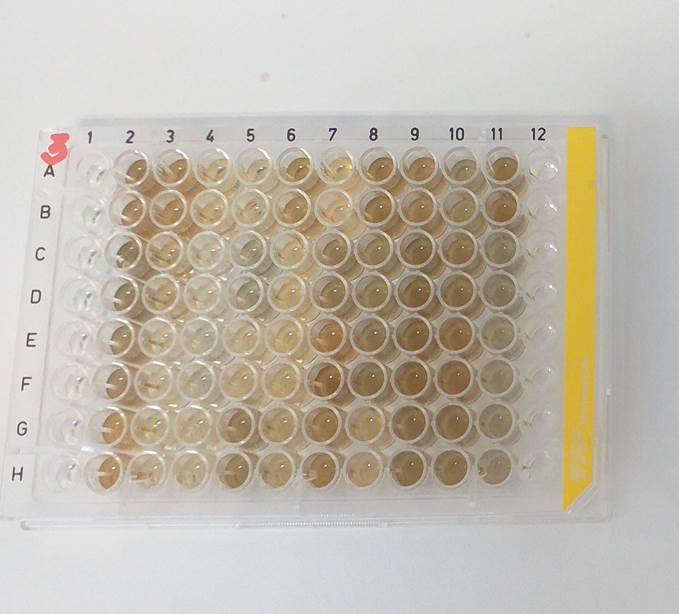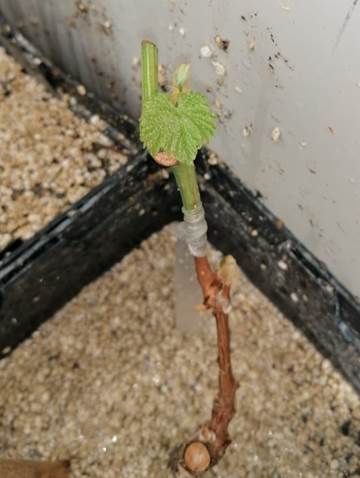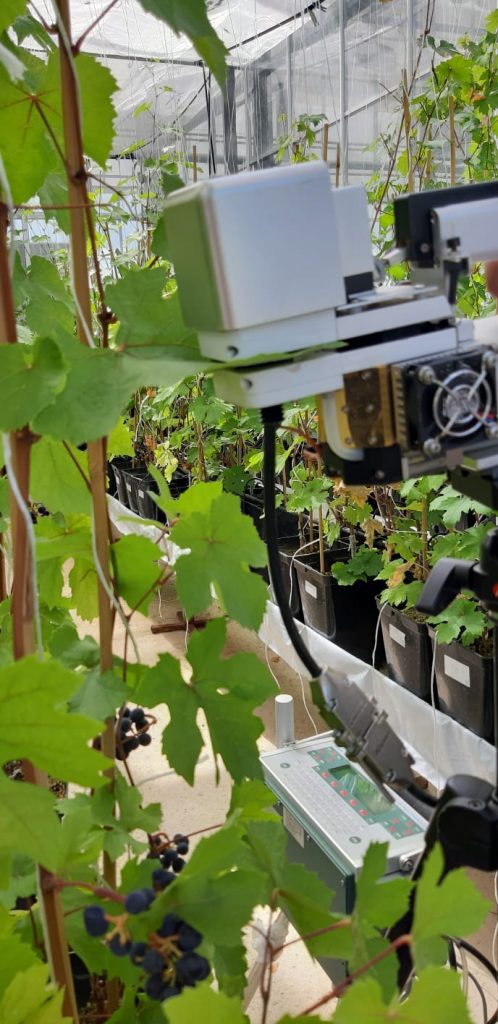On May 13, 2021, Emanuel Gaši successfully defended his Master thesis: ” Influence of Grapevine leafroll-associated virus 3 on stress indicators in grapevine ” at the Faculty of Science in Zagreb. His supervisor was Prof. Sandra Radić Brkanac, project associate, under whose mentorship, Emanuel made laboratory analyzes of grapevine samples from our experiment and prepared a thesis. The members of the reviewer commission evaluated the work with the highest grade. Congratulations to Emanuel on a great job and presentation, as well as to his mentor! This is also the first Master thesis made as part of the project, and we hope this is only the first one arose from the GRAPE-PATH3 project!
Training on Real-time PCR detection and quantification goes on
In the period from 19 to 24 April, the second part of the training of doctoral student Mate Čarija was held at the Department of Biology of the Faculty of Science in Zagreb, on the detection and quantification of various grapevine viruses by Real-time PCR. We detected viruses at the second time point in 3 species of indicator plants and cv. Tribidrag, all of which were infected with field isolates, of previously determined viral composition. We also quantified GLRaV-3 in these infections. As during the first part of the training, the training was led by Dr. sc. Silvija Černi, collaborator on the GRAPE-PATH3 project.
Disemination of GRAPE-PATH3 results on IAPV conference
Our assistant on the GRAPE-PATH3 project, Mate Čarija participated on this year’s online conference International Advances in Plant Virology organized by Association of Applied Biologists stationed in England. Title of the poster presentation was: Screening for grapevine viruses and GLRaV-3 genetic diversity in the most appreciated Croatian red indigenous cultivar Plavac Mali. The abstract will be published in this year’s conference book. For those interested in lectures which occurred on the conference, you can find them on the following link: https://www.youtube.com/channel/UC3yiNfbNqoKPqR15zqxTwAg

First results on virus detection and quantification gained by real-time PCR method
With Mate Čarija going to training at doc.dr. sc. Silvije Černi, project associate from the Biology Department of the Faculty of Science in Zagreb, we have started a new activity on the project. Real-time PCR is a reliable and accurate method for the determination and quantification of specific DNA molecules. In our team, we used this method for the first time to detect specific parts of viral DNA and to quantify GLRaV-3. The training was conducted on the Applied Biosystems 7300 Real-Time PCR System and lasted from 17 to 23 February. As part of the training, one set of plant samples from the experiment was performed.
Published scientific paper: “Predominance and Diversity of GLRaV-3 in Native Vines of Mediterranean Croatia” in the journal Plants
The first scientific paper within the GRAPE-PATH3 project on the topic of the prevalence and frequency of the virus in indigenous grapevine varieties and the genetic variability of the GLRaV-3 virus was published in the journal Plants (IF=4,658; Plant Sciences). The full paper is available at:
https://doi.org/10.3390/plants10010017

Another year is behind us. In many ways it was beautiful and successful year. We opened new chapters of the project and improved the already started ones: we performed the GLRaV-3 transmission from donor to virus-free host plants, we improved RT-PCR and serological testing for the detection of GLRaV-3, we analyzed morphological, physiological and biochemical parameters of plant stress, with each season we are better in symptoms observation and its interpretation, in the molecular laboratory we have NanoDrop of the latest generation.
But it was not always easy. Especially after the declaration of the COVID-19 pandemic, quarantine and work from home, pauses of purchasing project consumables and postponed conferences. But we have endured it all and we did it all with a smile under our masks.
In a good hope and desire to take off our masks as soon as possible, to socialize, visit and travel as before, to better connect and spread the ideas, knowledge and results more off- than on-line, we wish you a Merry Christmas and a Happy New Year 2021! Cheers!
GRAPE-PATH3 team



Symptoms of GLRaV-3 are visible in the form of leaves reddening which initially appears on smaller leaves surface. As the infection spreads, the entire leaf turns red, while only the leaf veins remain green. The leaves start to downroll. The symptoms first affect the older leaves but as the infection spreads, they become visible throughout the whole plant.
Back to Lab

After summer vacation, we are in the lab again! Together with our colleagues, we perform morphological and physiological analyzes on healthy and GLRaV-3 infected plants. We analyze plant growth, membrane permeability, leaf water and nutrient content, enzymes and stress hormone, and much more. This is also the time when changes typical for GLRaV-3 infection can be clearly determined in plants.
Spring and summer project activities
To verify the success of virus transmission by grafting, we used ELISA (Enzyme-linked immunosorbent assay) method for the detection of GLRaV-3 virus in the Microbiological laboratory. It is a serological method that enables the detection of viral antigens in a sample if the virus titar is satisfactory. Although we have adopted the method, the preferred time of virus detection in the plant is winter, and the sample type phloem tissue, so we will repeat this testing in the winter period in the dormant phase of grapevine plants.
In the meantime, we inoculated a small number of healthy indicator plants with selected GLRaV-3 isolates from the field. The type of grafting technique was “green grafting”. After only two days, the buds from the inserted plants began to grow, what guarantees virus transmission from the donor plant to the indicator host.
In the second half of July, we began to measure the photosynthesis in the experimental plants. Hopefully, infected plants will show differences in photosynthetic activity compared to control uninfected plants. We also hope for differences in photosynthesis activity between different GLRaV-3 isolates as well as between different host plants infected with the same isolate. Significant…?! It is to be seen.. 🙂
Grapevine inoculation with GLRaV-3 isolates
At the beginning of Mart our variety of grapevine plants were inoculated with different GLRaV-3 isiolates. Plants were infected with only one of GLRaV-3 variant (monophyletic isolates), and with combination of genetic variants (polyphyletic isolates). In some minor extend plant were also infected with mixt viral isolates composed of GLRaV-3 and other viruses that are the most abundant in our grapevine plants. Those are field isolates. In total we inoculated around 300 plants. Some part of the plants remained uninoculated and will serve as control plants. This experiment was designed to examine the biological characteristics of the genetic variants of GLRaV-3, their combinations and field isolates and to elucidate the behavior of GLRaV-3 virus and its variants in terms of replication in host plants and host responses to virus presence.
